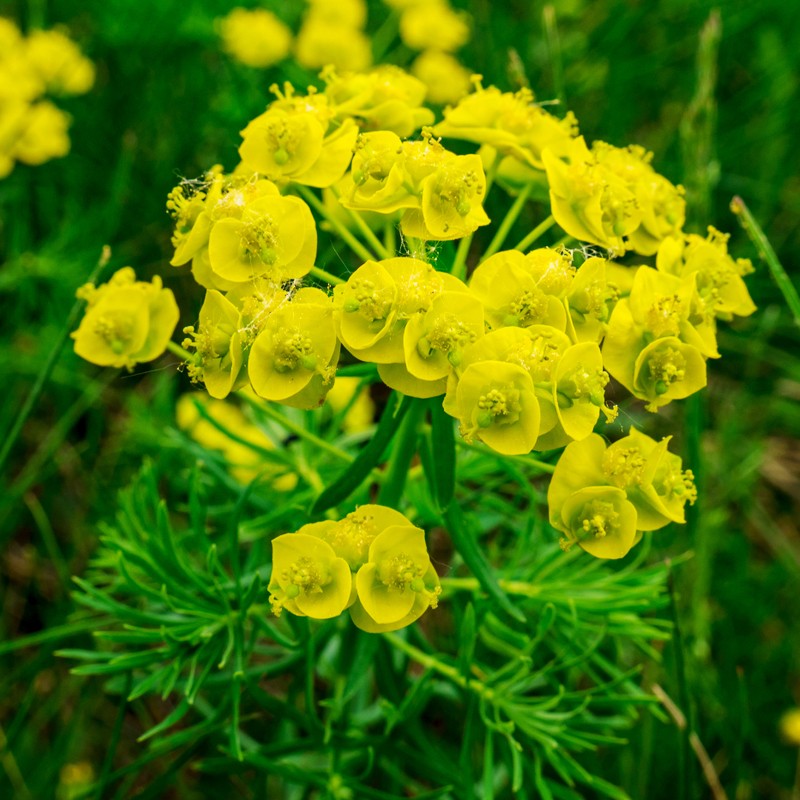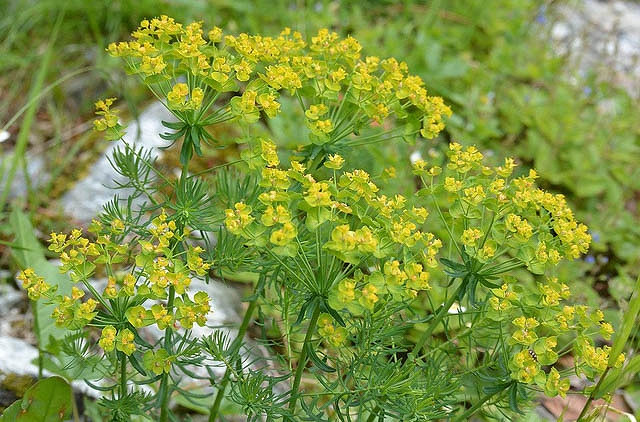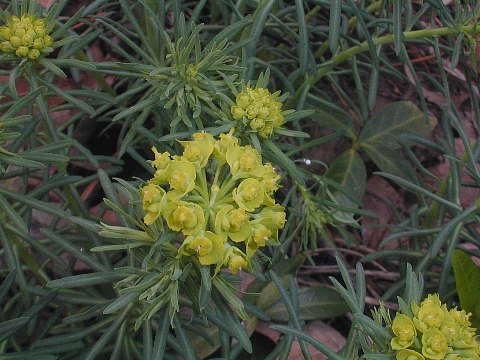Cypress Spurge: The Lowmaintenance Plant That's
Cypress Spurge: The Low-Maintenance Plant That's Perfect for Any Garden
Cypress spurge (Euphorbia cyparissias) is a low-maintenance, drought-tolerant plant that is perfect for any garden. It is native to Europe and Asia, but it is now naturalized in many parts of the world, including North America.
Cypress spurge is a herbaceous perennial that grows up to 12 inches tall. It has slender, green stems that are topped with clusters of small, yellow flowers. The flowers bloom in spring and summer, and they are attractive to bees and butterflies.
Cypress spurge is a very easy plant to care for. It prefers full sun, but it will tolerate some shade. It is drought-tolerant and does not require much fertilizer. In fact, too much fertilizer can actually encourage the plant to spread too aggressively.
Cypress spurge is a versatile plant that can be used in a variety of ways in the garden. It can be planted as a groundcover, in borders, or in rock gardens. It is also a good choice for xeriscaping.
Here are some of the benefits of planting cypress spurge in your garden:
- Low-maintenance: Cypress spurge is a very easy plant to care for. It does not require much water, fertilizer, or pruning.
- Drought-tolerant: Cypress spurge is drought-tolerant, making it a good choice for gardens in dry climates.
- Versatile: Cypress spurge can be used in a variety of ways in the garden. It can be planted as a groundcover, in borders, or in rock gardens.
- Attractive: Cypress spurge has attractive yellow flowers that are attractive to bees and butterflies.
If you are looking for a low-maintenance, drought-tolerant plant that is perfect for any garden, then cypress spurge is a great option.
Main Content
Planting and Care
Cypress spurge is a very easy plant to plant. It can be planted in spring or fall. Choose a location in full sun or partial shade. The soil should be well-drained.
Water cypress spurge deeply once a week during the first year after planting. After that, it should only need to be watered during periods of drought.
Cypress spurge does not require much fertilizer. A light application of compost in the spring will help to keep the plant healthy.
Cypress spurge is a relatively pest- and disease-free plant. However, it can be susceptible to aphids and spider mites. If you see any pests, you can treat them with insecticidal soap or neem oil.
Propagation
Cypress spurge can be propagated by seed, division, or cuttings.
To propagate cypress spurge from seed, sow the seeds in spring in a well-drained seedbed. The seeds will germinate in 2-4 weeks.
To propagate cypress spurge by division, divide the plant in spring or fall. Be sure to replant the divisions in well-drained soil.
To propagate cypress spurge by cuttings, take 4-6 inch cuttings in spring or summer. Dip the cuttings in rooting hormone and plant them in well-drained potting mix. The cuttings will root in 2-4 weeks.
Uses
Cypress spurge is a versatile plant that can be used in a variety of ways in the garden. It can be planted as a groundcover, in borders, or in rock gardens. It is also a good choice for xeriscaping.
Here are some specific uses for cypress spurge:
- Groundcover: Cypress spurge is a great choice for groundcover. It is low-maintenance and drought-tolerant, and it can help to suppress weeds.
- Borders: Cypress spurge can be used to create colorful borders in the garden. It is especially attractive when planted with other low-maintenance plants, such as sedums and yarrow.
- Rock gardens: Cypress spurge is a good choice for rock gardens. It is drought-tolerant and can tolerate poor soil conditions.
- Xeriscaping: Cypress spurge is a good choice for xeriscaping. It is drought-tolerant and can help to conserve water in the garden.
Conclusion
Cypress spurge is a low-maintenance, drought-tolerant plant that is perfect for any garden. It is versatile and can be used in a variety of ways. If you are looking for a low-maintenance plant that is easy to care for, then cypress spurge is a great option.
Cypress spurge is a plant that has been used for centuries for its medicinal properties. It is native to Europe and was brought over to North America as an ornamental garden plant. However, cypress spurge has also been used to treat a variety of health conditions, including breathing disorders, diarrhea, and skin diseases.
If you are interested in learning more about cypress spurge, I recommend visiting the website Garden Wiki. This website contains a wealth of information about the plant, including its history, medicinal uses, and safety concerns.
FAQ of cypress spurge
Q: What is cypress spurge?
A: Cypress spurge (Euphorbia cyparissias) is a perennial plant that is native to Europe and Asia. It is a member of the Euphorbiaceae family, which also includes poinsettias and milkweeds. Cypress spurge is a fast-growing plant that can reach heights of up to 3 feet. It has small, yellow flowers that bloom in the spring and summer. Cypress spurge is a noxious weed in some states, so it is important to be aware of its invasive potential before planting it.
Q: How does cypress spurge spread?
A: Cypress spurge spreads by seed and by vegetative means. The seeds are wind-dispersed, and they can also be spread by water, animals, and humans. Cypress spurge can also spread by creeping rhizomes.
Q: How to control cypress spurge?
A: There are a number of ways to control cypress spurge. One way is to hand-pull the plants. This is effective for small infestations, but it can be time-consuming and labor-intensive. Another way to control cypress spurge is to use a herbicide. There are a number of herbicides that are effective against cypress spurge, but it is important to choose one that is labeled for use on this plant.
Q: Is cypress spurge poisonous?
A: Yes, cypress spurge is poisonous. The sap of the plant contains a toxin that can cause skin irritation, nausea, vomiting, and diarrhea. If you come into contact with the sap, it is important to wash the affected area with soap and water immediately.
Q: Where does cypress spurge grow best?
A: Cypress spurge grows best in full sun and well-drained soil. It is a drought-tolerant plant, but it will do best with regular watering. Cypress spurge is not a cold-hardy plant, so it is not suitable for growing in areas with cold winters.
Image of cypress spurge
5 different images of cypress spurge from Pinterest:
- Image 1: A close-up of a cypress spurge plant, showing its small, yellow flowers and green leaves.

- Image 2: A group of cypress spurge plants growing in a field.
- Image 3: A cypress spurge plant in bloom, with its yellow flowers clustered together.

- Image 4: A cypress spurge plant with its leaves turned upward, showing its silvery undersides.

- Image 5: A cypress spurge plant in winter, with its leaves turned brown and its flowers gone.


Post a Comment for "Cypress Spurge: The Lowmaintenance Plant That's"